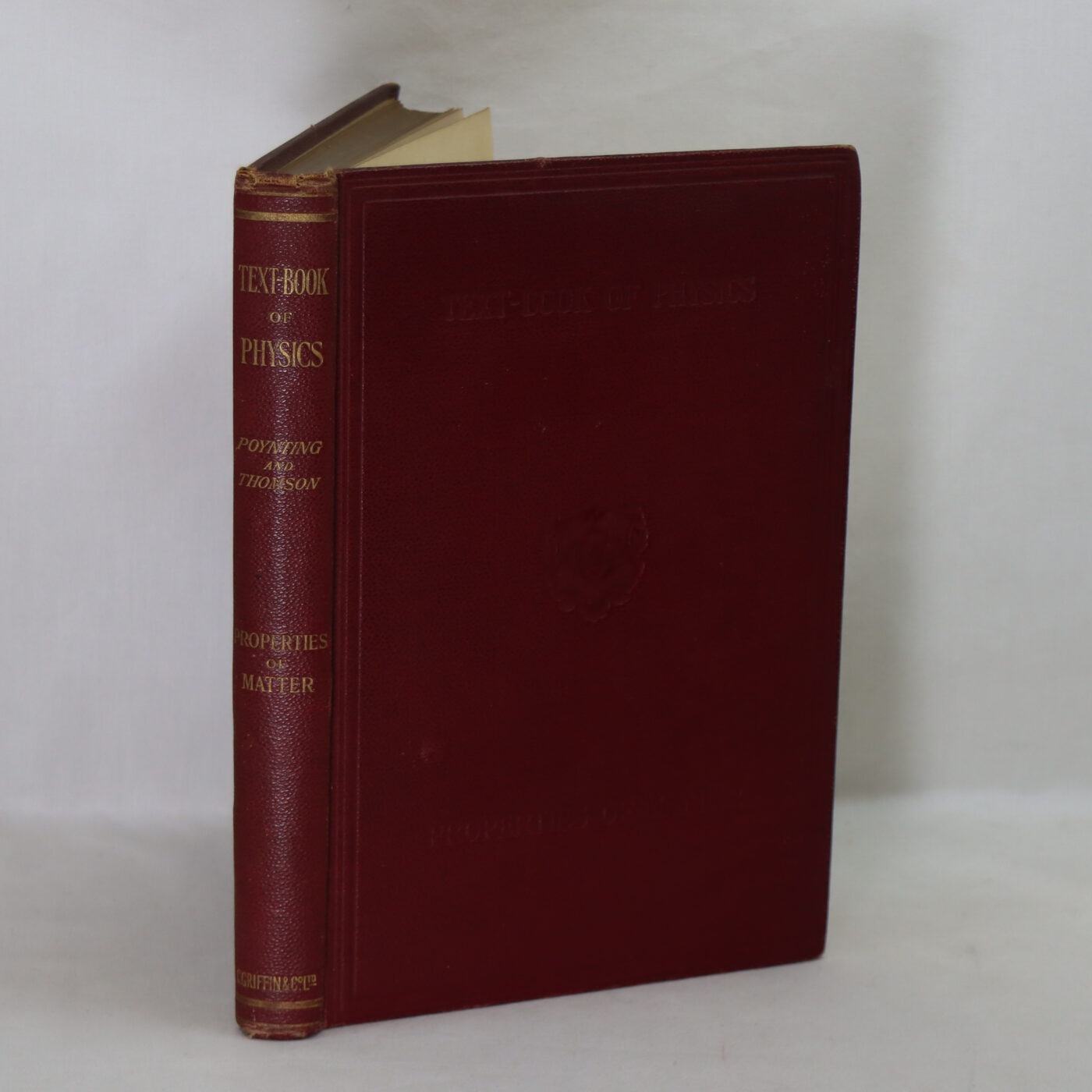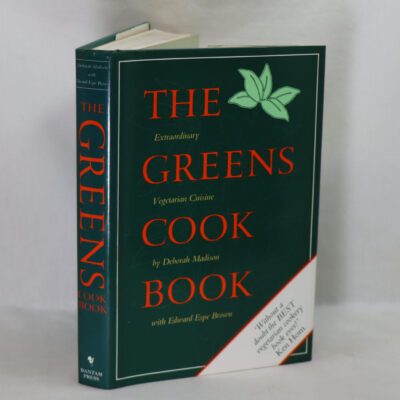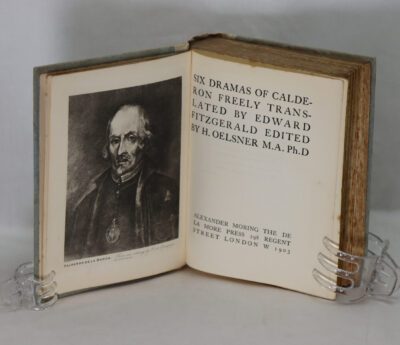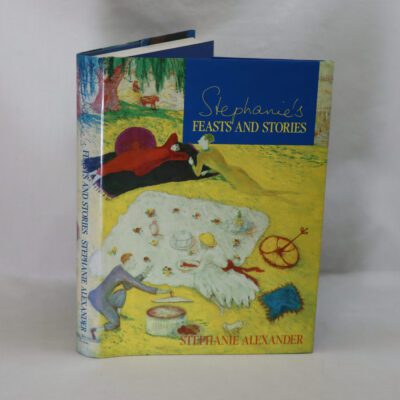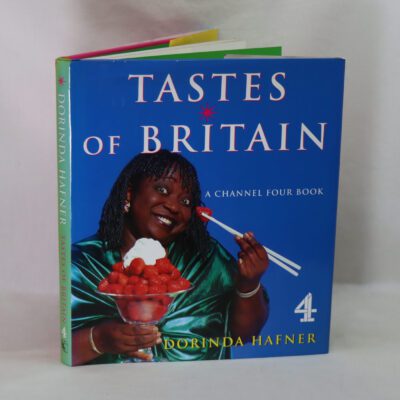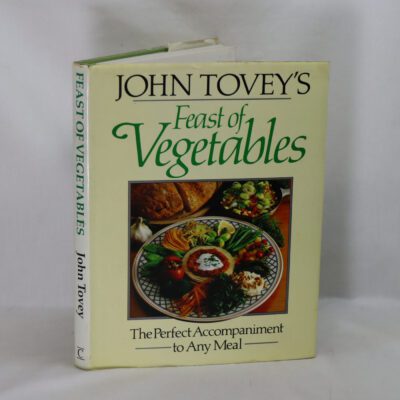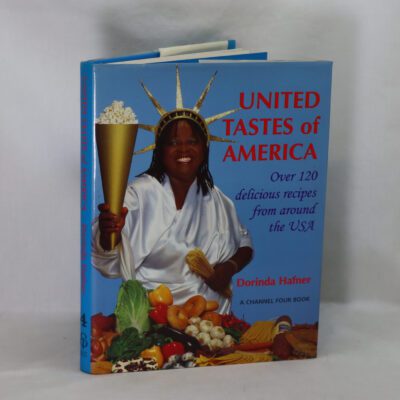A Text-book of Physics. Properties of Matter.
By J H Poynting & Sir J J Thompson
Printed: 1922
Publisher: Charles Griffin & Co. London
| Dimensions | 16 × 23 × 2 cm |
|---|---|
| Language |
Language: English
Size (cminches): 16 x 23 x 2
Condition: Very good (See explanation of ratings)
Item information
Description
Hardcover. Maroon cloth binding with gilt title on the spine.
We provide an in-depth photographic presentation of this item to stimulate your feeling and touch. More traditional book descriptions are immediately available
- Note: This book carries a £5.00 discount to those that subscribe to the F.B.A. mailing list
For conditions, please view our photographs. Sixth edition with 168 illustrations. A nice clean copy from the library gathered by the famous Cambridge Don, computer scientist, food and wine connoisseur, Jack Arnold LANG.
John Henry Poynting FRS (9 September 1852 – 30 March 1914) was an English physicist. He was the first professor of physics at Mason Science College from 1880 to 1900, and then the successor institution, the University of Birmingham until his death.
Sir Joseph John “J. J.“ Thomson (18 December 1856 – 30 August 1940) was a British physicist whose study of cathode rays led to his discovery of the electron, a subatomic particle with a negative electric charge. In 1897, Thomson showed that cathode rays were composed of previously unknown negatively charged particles (now called electrons), which he calculated must have bodies much smaller than atoms and a very large charge-to-mass ratio. In 1906, Thomson was awarded the Nobel Prize in Physics “in recognition of the great merits of his theoretical and experimental investigations on the conduction of electricity by gases”. Thomson is credited with finding the first evidence for isotopes of a stable (non-radioactive) element in 1912, as part of his exploration into the composition of canal rays (positive ions). His experiments to determine the nature of positively charged particles, with Francis William Aston, were the first use of mass spectrometry and led to the development of the mass spectrograph. Thomson was an influential teacher, and seven of his students went on to win Nobel Prizes: Ernest Rutherford (Chemistry 1908), Lawrence Bragg (Physics 1915), Charles Barkla (Physics 1917), Francis Aston (Chemistry 1922), Charles Thomson Rees Wilson (Physics 1927), Owen Richardson (Physics 1928) and Edward Appleton (Physics 1947).
Want to know more about this item?
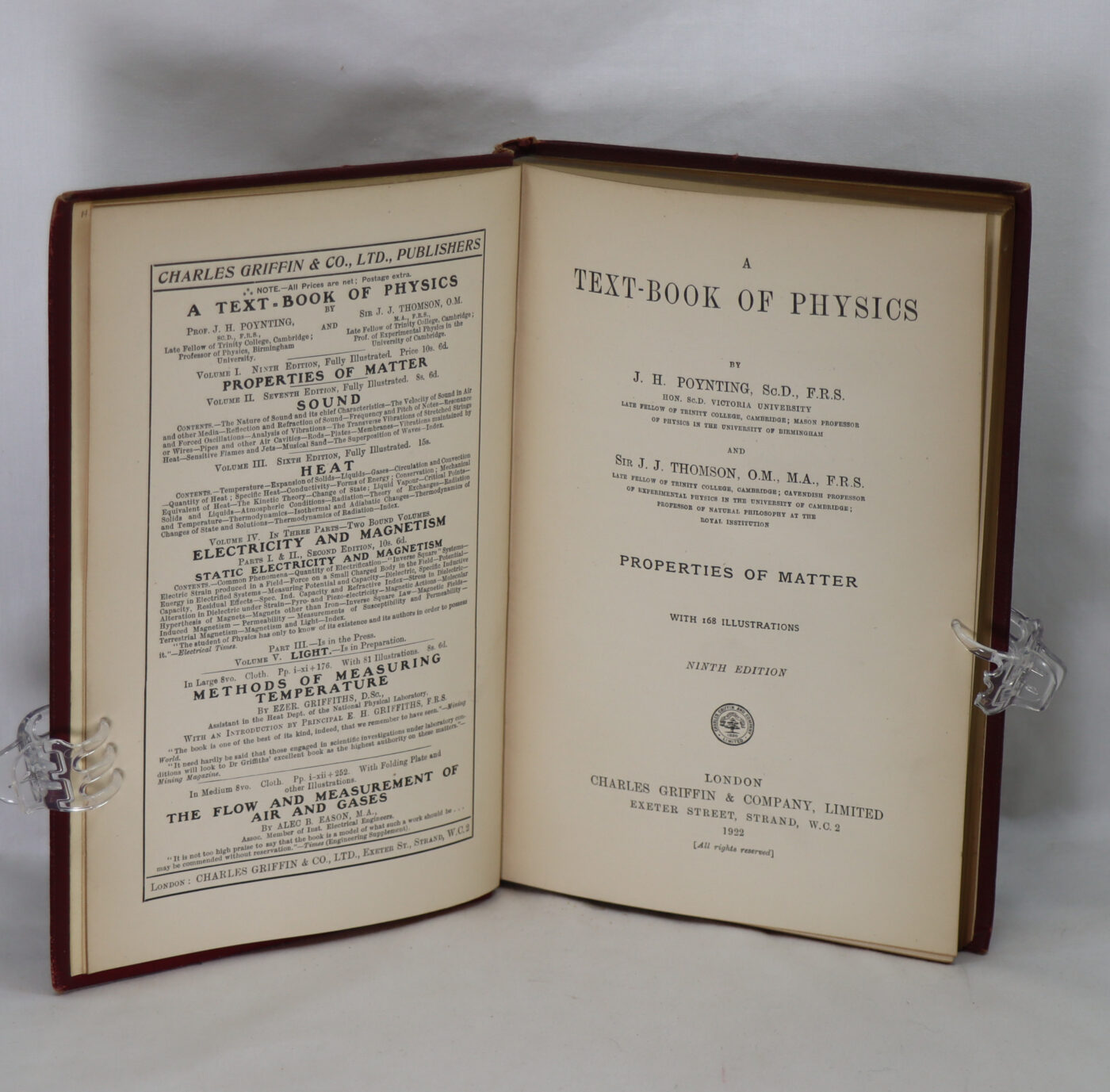
Related products
Share this Page with a friend

